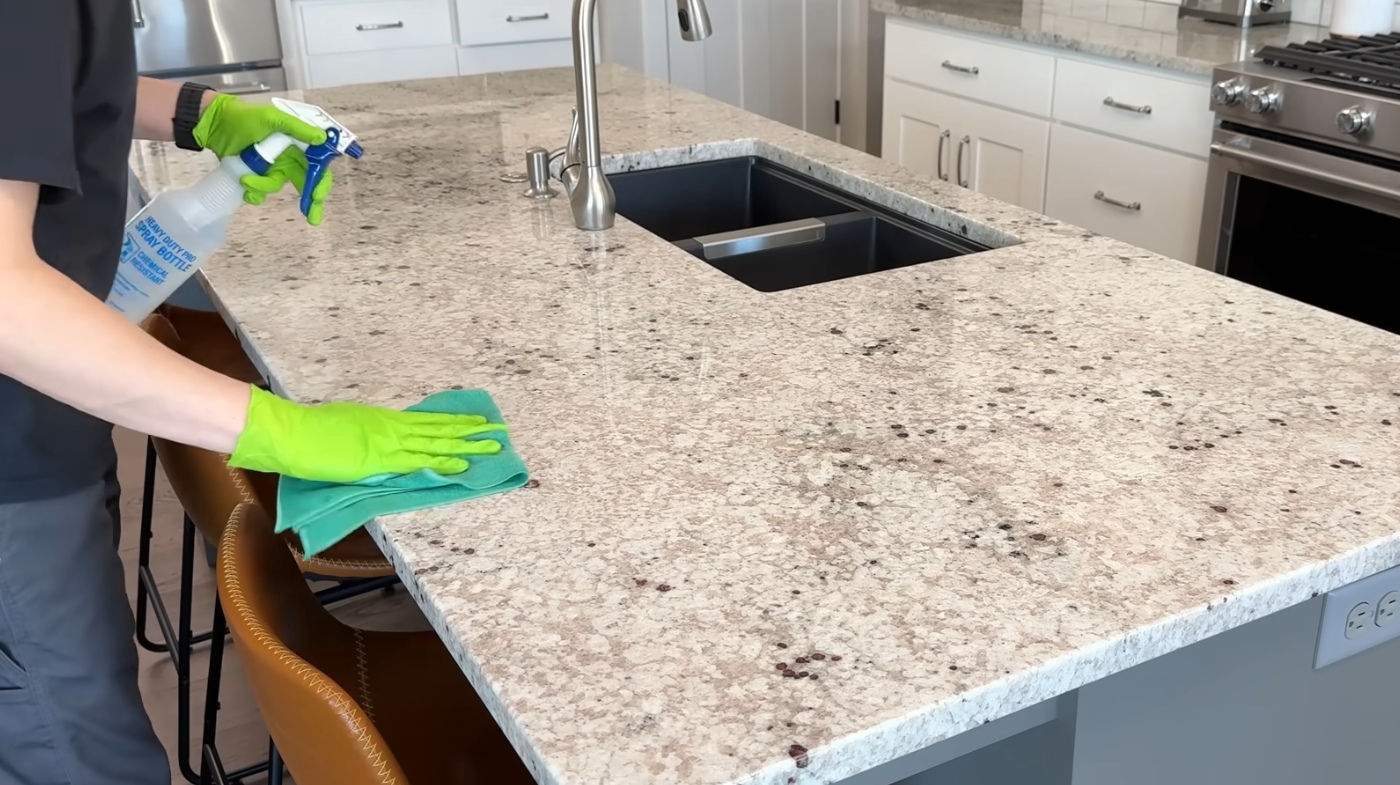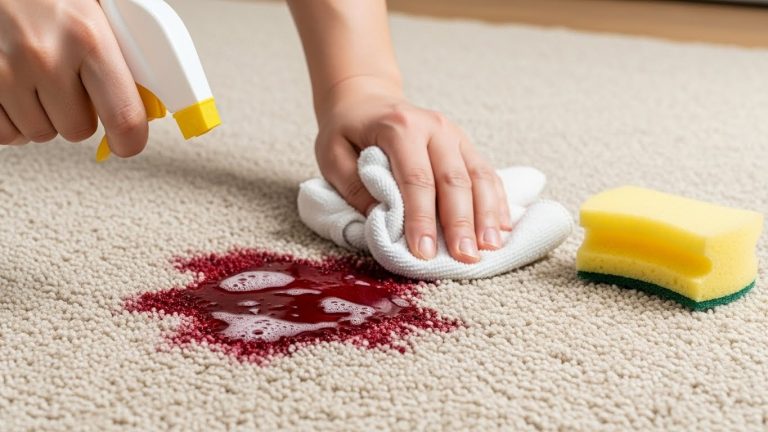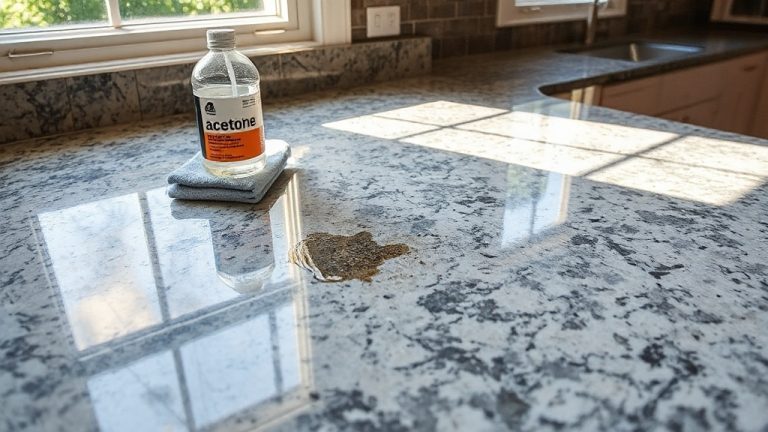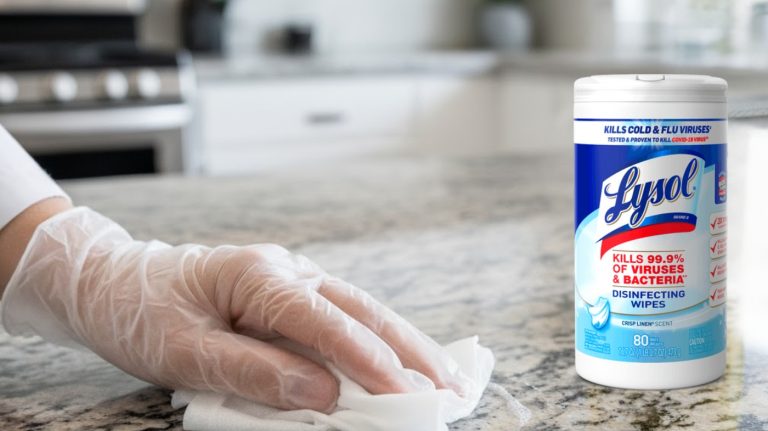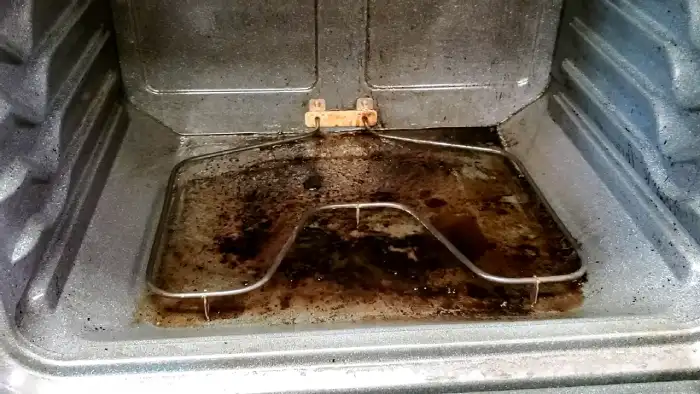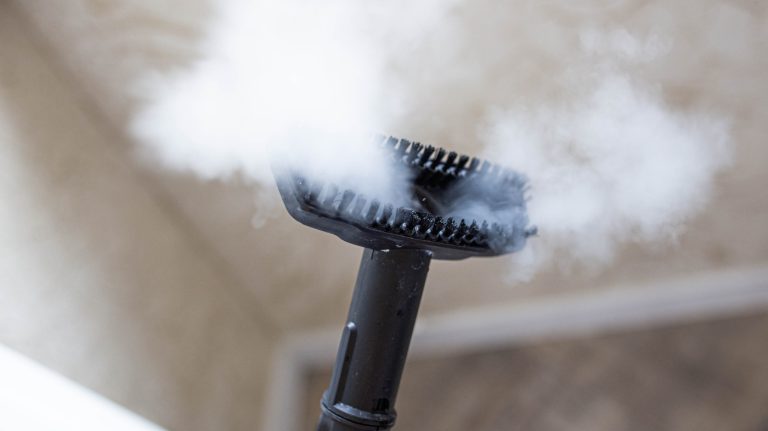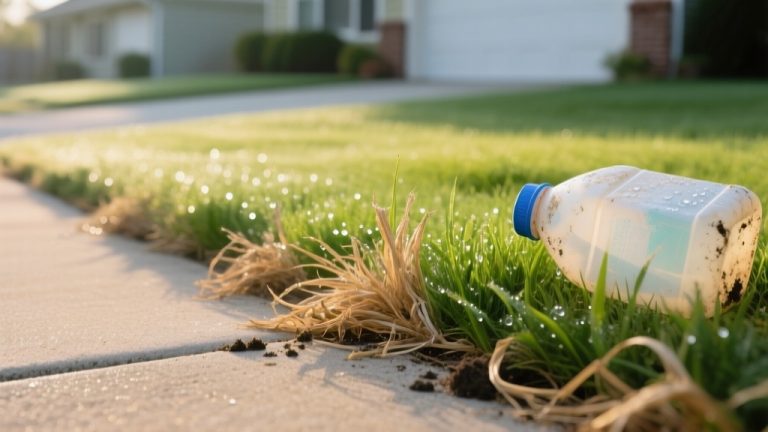How to Clean Rust off Marble? Easy Steps for a Spotless Look
To clean rust off marble, identify the orange-brown stain near metal fixtures first. Gently remove surface rust using a damp magic eraser or mild abrasive toothpaste, avoiding harsh scrubbing.
For deeper stains, apply a baking soda and distilled water poultice, covering it with plastic wrap for up to 48 hours before wiping clean.
If needed, use a marble-safe rust remover cautiously to prevent etching. Learn how to protect and maintain your marble to avoid future rust damage.
Key Takeaways
- Identify rust stains by their orange-brown color and location near metal fixtures on marble surfaces.
- Use a damp magic eraser or soft cloth with mild toothpaste for light rust stains without damaging marble.
- Prepare a baking soda poultice by mixing baking soda and distilled water, apply it, cover with plastic, and remove after 24-48 hours.
- For deep rust stains, use a baking soda and hydrogen peroxide poultice or a marble-safe rust remover, avoiding acidic products.
- Seal marble regularly, clean spills promptly with pH-neutral cleaners, and use protective mats to prevent future rust stains.
Identifying Rust Stains on Marble
When you’re identifying rust stains on marble, the key is to focus on their distinctive orange to brown color and the shapes that often mirror the metal objects causing them, such as nails or flower pots.
Rust stains contrast sharply against marble’s lighter surface and vary from light orange to deep brown depending on exposure time.
Check areas near metal fixtures, plumbing, or outdoor furniture where moisture accelerates iron oxidation. It is important to note that metal stains may require removal with a poultice for effective treatment.
Differentiate rust from greenish copper stains or dark oil spots by noting the reddish-brown hue. Be aware that faint or deep-set rust may blend with dirt or other stains, especially on darker marble.
Verify rust by inspecting proximity to iron objects and considering the marble’s use history to ascertain accurate identification before treatment.
Using Gentle Abrasives for Surface Rust
Although marble is a delicate surface, you can safely remove light rust stains using gentle abrasives designed to minimize scratching and preserve its polish.
Use dampened magic erasers or soft cloths to gently rub rust in circular motions. Avoid harsh scrubbers and acidic cleaners to prevent etching.
Always test abrasives on a hidden area first. For more stubborn rust, some users have found that applying a toothpaste treatment can help lift the stain without damaging the marble.
| Abrasive Type | Application Tip | Caution |
|---|---|---|
| Magic Eraser | Dampen before gentle circular rubbing | For light, surface stains only |
| Soft Cloth/Sponge | Use non-abrasive materials | Avoid scrubbing with force |
| Baking Soda Paste | Applied as a poultice, not scrubbed | Cover with plastic wrap to retain moisture |
| Commercial Cleaners | Follow label instructions carefully | Use pH-neutral products only |
This method preserves marble’s finish while addressing surface rust efficiently.
Preparing and Applying a Baking Soda Poultice
To treat deeper rust stains, prepare a baking soda poultice. Below are the simple steps to apply it effectively:
Mixing Poultice Ingredients
Because rust stains require gentle yet effective treatment, mixing a baking soda poultice with the right consistency is essential for successful removal on marble surfaces.
Start by measuring roughly one heaping tablespoon of baking soda into a clean container. Add about one teaspoon of distilled water, stirring continuously to activate the baking soda.
Gradually add water until you achieve a smooth, thick paste—think frosting or toothpaste consistency—that won’t run or drip. Test method on an inconspicuous spot first to ensure the poultice does not damage the marble.
Avoid acidic or abrasive additives, as they damage marble. For enhanced rust removal, you can blend a commercial non-acidic rust remover with the baking soda base.
Prepare the mixture just before use to maintain effectiveness, ensuring it’s lump-free and adhesive enough to stay put without excessive stickiness.
Applying Paste Evenly
Once you’ve prepared a smooth, lump-free baking soda paste, it’s time to apply it evenly to the rust-stained marble. Use a plastic spatula to spread a uniform 1/4 inch (6 mm) thick layer over the stain.
Avoid scrubbing to prevent damage; instead, gently smooth the edges so the paste blends into the surrounding marble. This guarantees ideal absorption and prevents paste drying out prematurely.
Applying the paste evenly also helps maximize the cleaning properties of baking soda on marble surfaces.
| Step | Detail |
|---|---|
| Thickness | 1/4 inch (6 mm) |
| Tool | Plastic spatula |
| Application Style | Gentle spreading, no scrubbing |
| Edge Finish | Smooth blending into marble |
Maintaining even coverage and proper thickness maximizes the poultice’s effectiveness in drawing out rust stains.
Poultice Removal Process
Before applying the baking soda poultice, you’ll need to prepare the stained marble surface carefully by cleaning it with mild detergent and warm water, then drying it completely to guarantee proper adhesion and penetration.
Next, mix baking soda with distilled water until you get a thick paste, similar to toothpaste. For rust stains, you can substitute water with a non-acidic rust remover.
Spread the poultice evenly over the stain, about 1/4 inch thick, and cover it tightly with plastic wrap, securing the edges with painter’s tape. Leave it undisturbed for 24 to 48 hours, avoiding heat or sunlight.
When dry, gently remove the poultice using a plastic spatula, rinse with distilled water, and dry thoroughly. Repeat if stains persist.
Applying Specialized Rust Remover Products
If stains persist, carefully apply marble-safe rust remover products. Below are the steps to ensure safe and effective use:
Choosing Effective Rust Removers
Although removing rust from marble can be challenging, choosing the right specialized rust remover product is crucial to protect your stone’s integrity.
Opt for products specifically formulated for marble, like MAR GEL PLUS or Akemi Marble Rust Remover, which are safe for acid-sensitive stones.
MAR GEL PLUS features a gel formula that penetrates deeper than standard products for effective stain removal without etching. Avoid acidic removers that risk etching polished surfaces.
Consider the rust’s depth: light stains may respond to Magic Eraser-type sponges, while deeper stains might require poultice-based removers or combined removal and sealing kits. Ready-to-use formulas simplify application and reduce error.
Always check product safety data sheets to manage health risks, since some removers contain hazardous chemicals. Pre-test the remover on an inconspicuous spot to ascertain compatibility.
Safe Application Techniques
Anyone handling specialized rust remover products must prepare their workspace and protect both the marble surface and themselves.
Begin by cleaning and drying the marble, then shield adjacent areas with painter’s tape. Wear gloves and eye protection, and guarantee ventilation.
The water-based formula of the rust remover ensures a neutral pH, making it safe for delicate marble surfaces. Apply poultices or ready-to-use gels carefully, avoiding abrasives and metal tools that risk damage.
| Step | Key Action |
|---|---|
| Preparation | Clean, dry, protect edges |
| Application | Apply gently, avoid scrubbing |
| Safety & Monitoring | Use PPE, check surface condition |
Follow manufacturer instructions precisely. Control poultice moisture and dwell time, rinse thoroughly, and dispose of waste responsibly.
Advanced Techniques for Deep Rust Stain Removal
If your marble surface has deep rust stains, standard cleaning methods likely won’t be enough, so you’ll need to employ advanced techniques that combine specialized products and careful poulticing.
Start by preparing a poultice using baking soda and hydrogen peroxide, applying it generously over the stain, then sealing it with plastic wrap to allow the mixture to draw out rust. This method is especially important because marble tiles in wet areas are particularly susceptible to rust stains.
After 24-48 hours, rinse thoroughly with water and dry with a soft cloth. For stubborn stains, consider commercial, marble-safe rust removers with alkaline formulas to avoid etching.
Multiple poultice applications may be necessary. Always verify product compatibility with marble to prevent damage.
If stains persist, consult a professional who can assess the depth and recommend tailored treatments, preserving the stone’s integrity while effectively removing deep-set rust.
Protecting Marble Surfaces From Future Rust Stains
After removing stubborn rust stains, focus on protecting your marble to prevent future damage.
Begin by sealing the surface every 6 to 12 months with a marble-specific sealer. Apply it only on a clean, dry surface to guarantee proper adhesion and durability. Purchase and apply a sealer every few months to maintain effective protection against rust.
Seal marble every 6 to 12 months on a clean, dry surface for lasting protection.
Quickly clean any spills using pH-neutral, marble-safe cleaners and avoid acidic or abrasive products that degrade the protective layer. Dry the surface thoroughly to minimize moisture retention.
Limit direct contact between marble and metal items by using protective mats or coasters. Maintain stable indoor humidity to reduce condensation.
For added defense, consider impregnating sealers or professional treatments in high-traffic areas.
Tips for Regular Maintenance and Rust Prevention
To keep your marble surfaces free from rust, you should adopt consistent cleaning routines that minimize exposure to damaging elements.
Use gentle tools like damp microfiber cloths and pH-neutral stone cleaners, and clean spills immediately—especially liquids in contact with metal.
Since marble is very porous, even small amounts of rust can soak in quickly, making prompt cleaning essential.
Control moisture by maintaining low humidity, drying surfaces after use, and fixing leaks promptly. Regularly dust to prevent dirt and metallic particle buildup.
| Maintenance Aspect | Recommended Action |
|---|---|
| Cleaning | Use non-abrasive tools and pH-neutral cleaners |
| Moisture Control | Dry surfaces, fix leaks, ventilate |
| Inspection & Upkeep | Regularly check for early rust signs |
Frequently Asked Questions
Can Rust Stains on Marble Cause Structural Damage?
Rust stains on marble don’t usually cause immediate structural damage, but you shouldn’t ignore them.
Over time, rust can weaken the marble, especially if cracks allow water to seep in and accelerate oxidation. This can lead to more serious issues like mold and surface deterioration.
You’ll want to address rust stains promptly and maintain your marble regularly to prevent these long-term problems and keep the stone strong and intact.
Is It Safe to Use Vinegar on Rust Stains on Marble?
You shouldn’t use vinegar on rust stains on marble. Its high acidity can etch and damage the marble’s surface, leaving permanent marks.
Instead, choose products specifically designed for marble or try gentle options like mild soap or a baking soda paste. Always test any cleaner on a small area first and avoid abrasive scrubbing. Protecting your marble with sealing and prompt stain treatment is key to maintaining its finish.
How Long Does It Take for a Baking Soda Poultice to Work?
Patience powers poultice performance. When you apply a baking soda poultice, expect it to work within 24 to 48 hours. This timeframe lets the paste penetrate and pull rust from the marble’s pores effectively.
For tougher stains, you might need to repeat the process, maintaining careful application and gentle removal each time. Avoid rushing—adequate time guarantees the marble stays safe and the stain fades thoroughly.
Can Rust Remover Products Discolor Marble Surfaces?
Yes, rust remover products can discolor marble surfaces, even those formulated specifically for marble. You should know that some chemicals in these removers might cause lightening or darkening, especially on porous or sensitive marble.
To avoid damage, always test the product on a hidden spot first, follow application times carefully, and rinse thoroughly. Using gentle methods and sealing afterward helps maintain your marble’s natural color and prevents future issues.
Are There Eco-Friendly Alternatives for Rust Stain Removal on Marble?
Imagine using a medieval poultice, but today you’ve got eco-friendly options like baking soda or lemon juice to tackle rust stains on marble.
You’ll want to pick cleaners made from natural oils or biodegradable ingredients, ensuring they’re marble-safe. Always test a small spot first, apply gently with a soft cloth, and wear gloves.
Restore and Protect Your Marble for Lasting Beauty
Now that you know how to tackle rust stains on marble, why let those stubborn marks ruin your beautiful surfaces? By using gentle abrasives, baking soda poultices, or specialized removers, you can restore your marble’s natural shine effectively.
Remember, protecting your marble and maintaining it regularly is just as important as cleaning. With the right care and techniques, you’ll keep your marble looking flawless and rust-free for years.

